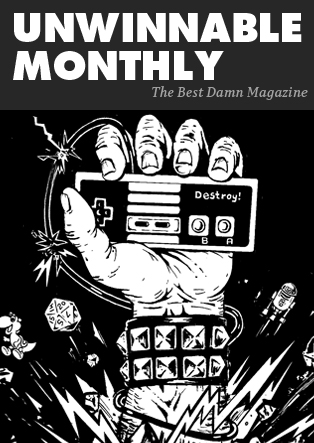Play-to-earn games are thriving ? and changing the industry
Play-to-earn games have grown in popularity recently as part of online gaming that rewards users for playing. Most games are based on blockchain technology, which provides features of decentralization, immutability, and transparency.
Ethereum established itself as the primary network supporting P2E games due to its smart contract functionality. This also made it easy for the Ether cryptocurrency to become a prominent way for users to receive rewards for playing. Still, the cryptocurrencies used as payment expanded, especially those with massive popularity among certain communities, such as Dogecoin. The asset is pioneering in the gaming and entertainment industries, so making a Dogecoin prediction for the long term involves its usage in games and blockchain projects.
Crypto payments make a big difference in the gaming industry, but blockchain is also reshaping everything we know about it.

Why is P2P gaming popular?
P2P gaming is possible thanks to decentralized finance protocols that automatically reward players and blockchain technology that supports transactions and gaming. Users can exchange utility tokens, whether native to the game or not, for real-value assets, which sets them apart from traditional gaming.
The sector became popular when CryptoKitties was released into the market. The game allowed users to play with NFTs in the form of cute cats they would buy, sell, and create in the game. Since then, many other brilliant crypto games have been created, such as the following:
- Axie Infinity uses Axie creatures that fight with Chimeras, but they can also be collected and traded;
- The Sandbox allows users to design NFTs or spaces in the metaverse for fun experiences sold on the marketplace;
- Decentraland is similar as users can create scenes and interactive spaces with wearable and emotes;
P2P gaming has numerous benefits for users
P2P experiences construct the future of traditional gaming, in which players must buy collections and wearables to improve their experience. Today’s gaming consists of free-to-play games that contain several in-app purchases, making the experience less pleasant even for mobile gaming.
Peer-to-peer gaming is better simply because it uses technology that enhances the multiplayer experience and reduces the lag. As players immerse in the game, the quests they’re doing offer them incentives. On the other hand, game developers benefit from the cost-saving features of publishing their games, along with all the previous tools that have helped develop them.
At the same time, P2P technology ensures games are secure and optimized and come with reliable customer support.
However, P2P gaming has its challenges
Despite benefits and opportunities, P2P gaming is still in its early stages and is facing several issues. For example, scalability is a common problem in decentralized ecosystems, including gaming, because the state at which networks increase can sometimes exceed developer expectations. Predicting the time frame and number of users on the network is complex, and since the rewards are cryptocurrencies, their volatile prices can bring more or less players on platforms.
Scalability problems lead to delays as more players enter the network, which is why some games break down their online spaces into smaller sections. This separation allows the main game to handle information consistently and avoid time-outs.
Crypto wallets can also be an inconvenience since P2P games might use different blockchain layers to ensure top-north security and immutability. For example, games built on Ethereum require distinct wallets from those established on Solana, even though the underlying technology is similar. Blockchains must find efficient ways to communicate and allow players to switch from one game to another with the same wallet.
What’s the best blockchain for crypto gaming?
Crypto gaming requires a blockchain base that offers all the support tools for developers to create and scale games. Ethereum is usually the preferred option since it evolved into a platform that permits the creation of anything imaginable through smart contracts and non-fungible tokens.
Ethereum is secure, transparent, and has the best support for interoperability and cross-chain platforms. However, other blockchains, such as Solana, Polygon, and Avalanche, are faster and cheaper than Ethereum.
There are numerous aspects to consider when choosing a blockchain for a game’s development, such as the following:
- On-chain liquidity ensures the ecosystem is active and profitable, supporting fast transactions and in-game interactions;
- NFT infrastructure is essential for allowing them as payment methods or in-game assets, so gateways and storage solutions are vital;
- Chain technical compatibility with developer expertise influences integration and development;
- Abstract accounts allow users to control their funds with the support of smart contract management;
8 steps to develop a P2P blockchain game
Developing a blockchain game differs considerably from regular ones, but the learning curve isn’t that steep, so anyone can start it. The concept and game mechanics are a bit new since they include decentralization and peer-to-peer transactions. This is the first step: defining the game mechanics and integrating assets and tokenization. This is followed by:
- Selecting a blockchain platform that supports MFTs, interoperability, and DeFi protocols;
- Designing NFTs and their use cases, along with the tokenomics model;
- Securing smart contracts through multi-signature wallets and security audits;
- Building the actual game, which is the most time-consuming due to integrating on-chain data, gateways, and APIs;
- Testing the game and preparing it for deployment through the public beta phase;
- Creating a DAO (decentralized autonomous organization) and marketing the game;
- Adapting the blockchain landscape through player feedback;
Some of the best things to work on when creating a game should focus on the engagement of the core gameplay. Above all, the game should be fun, and people should enjoy it and return or share it with friends. For that, you may also need to work on gas fee optimization and full-on decentralization.
What do you think about games on a blockchain?
P2P crypto games are based on blockchain technology, which makes them decentralized, faster, and cheaper than traditional games. Considering how the real-world gaming industry is introducing endless in-game purchases that affect the gaming experience, blockchain gaming allows players to enjoy different types of games while acquiring rewards for quests. Due to their various tools, blockchains like Ethereum and Solana are pioneering the creation of decentralized games.




